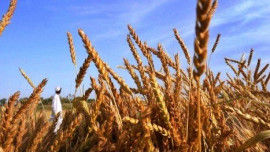
With private universities emerging in the mid-1980s, Pakistan is a unique example of a system that dropped its dependence on public funding and universities were encouraged to generate their own funds. Country Director British Council Pakistan Peter Upton put forward an important question at the dialogue: is higher education a private commodity, given the decline in state funding?
In Pakistan’s case, experts must examine whether injecting funds and expansion of higher education is concurrently improving university performance, institutional capacities and academic quality. Neighbouring India makes a mental note: “There has been remarkable progress in the number of colleges and student enrollment, but there are concerns for quality and regulation,” Professor Furqan Qamar, vice-chancellor Central University of Himachal Pradesh, stated at the policy dialogue.
While women’s education is fast becoming a major concern in South Asia’s economic development agenda, hats off to Pakistan for the highest percentage of female students as a percentage of the total tertiary enrolment, in comparison with other countries in the region. Still, Pakistan needs to encourage more female participation in higher education.
Pakistan’s education scenario has been marred by political instability, natural disasters, conflict and obvious lack of health, infrastructure and labour markets, like most other countries in the region. For this reason, higher education competes with other areas for funding and the government struggles to allocate due respect to this area. Moreover, it is observed that foreign donors are mostly interested in primary and secondary education and thus, higher education suffers. But Professor Dr Mukhtar Ahmed, chief executive officer at the Higher Education Commission, begs to differ and favours the government, “It is a good time in higher education sector. The government realises that higher education is important.”
Some of the themes prevalent at the dialogue included student experiences, access and quality of higher education, graduate employability, and overseas delivery models. Professor Clive Mulholland, deputy vice-chancellor at the University of South Wales, spoke about the student experience and how it is evolving; institutions are designing a system based on their own experiences — and not the students’ experiences. This requires managing a student experience for young guns who are always connected and looking for instant gratification, like online support services.
Mulholland also observed that very few attendees were ‘live tweeting’ the event at #EducateSAsia, even while more than 70 per cent of the participants owned a smartphone. Times are changing and higher education needs to catch up, especially in a country like Pakistan where an increasing number of students are getting on the internet every day.
While at a critical junction, South Asia is struggling to make higher education a matter of national interest. Foreign participation is growing but international models can’t be fully adopted in South Asia given the sociocultural environment and specific needs of the region.
To this end, issues related to governance, access, capacity building, quality, and politicisation remain key constraints. The tragic reality, especially in Pakistan, is that higher education is still not the main priority of governments and markets, posing a threat to our global positioning and causing a great urgency.
Published in The Express Tribune, August 20th, 2013.
Like Opinion & Editorial on Facebook, follow @ETOpEd on Twitter to receive all updates on all our daily pieces.
COMMENTS (16)
Comments are moderated and generally will be posted if they are on-topic and not abusive.
For more information, please see our Comments FAQ






























1714024018-0/ModiLara-(1)1714024018-0-270x192.webp)






@np I don't what to say but lot of peoples don't believe us when we say we are indian I am not talking lower Pakistan but upper Pakistan in north west of area.......
Is it possible the simple answer to the topic the author is writing about is "demand and supply". Several readers have commented that there are economic factors and yes that is true. Again the demand needs to exist for someone (or the country) to think about creating the supply.
"higher education" stops where? Do we mean professional colleges or advanced masters and PhD degrees? If we were to constrain ourselves to professional colleges then I don't believe we are at the bottom of the chart in south Asia.
I think the population that can easily afford good higher education is sending their children abroad and then leave it to the kids if they would want to return to Pakistan to take advantage of potential opportunities.
Create the demand and the supply will evolve.
Thank you for writing the article. I think commentators above are missing the fact that all these stats are based on research by the Economist Intelligence Unit - commissioned by the British council! Refreshing new take on higher education....... we need more of such pieces. But I can't understand why people are talking about 'bomb blasts' in relation to women's education. Two different scenarios entirely - the article states that higher educ, has been affected by a myriad of issues like terrorism of course. And it definitely does compete with primary and secondary education btw.. most intl donor agencies are giving priority to primary and secondary education rather than higher education. Again, thanks Anum!
In middle east especially UAE,pakistanis prefers Indian schools for quality education
@One who knows: When in Pakistan they have Arabic roots but once in UK or Canada, they suddenly realize that they are South Asian - especially when it comes to any reference to negative stories such as sex grooming scandal in UK. This is for tose that do not outright call themselves Ndians.
@One who knows: You are correct that the whole article was about Pakistan not south Asia except for the passing and out of context reference to the female to male ratio in tertiary education without considering absolute number of men or women who enrol for tertiary education and without considering the gender gap in literacy across the region.
There is a serious anomaly here. The author talks about South Asia, but discusses only Pakistan. I thought Pakistan had moved geographically to the middle-east. Leave Pakistan out, and you find that South Asia is doing fine, ever heard of the IITs, IISc, and the numerous well respected Universities in India? I admit that middle eastern Sheikhdoms are worried about Pakistanis masquarading as Arabs, but the Iranis are happy no longer to be confused with Pakistanis.
@Mariam M: Did you go to a government school in Pakistan or a private school? @Nadir is talking about quality of education in government schools.
More important than even quality and more basic is access to primary education to girls in many parts of the country
Definitely a refreshing note on the increased number of girls getting enrolled in schools in Pakistan. And I have to differ with Nadir, as my personal experience was very different. Primary and secondary education in Pakistan is much better than that compared with say Dubai/ US I would say. I was in primary school in Pakistan and then in the US for jr. and high school. Aced my grades in the US with credit to my foundation years of education spent in Pakistan as perhaps it would have been a much different story had I been in the US system all along. That said, I do believe that the higher education system in the US is a million times better than in Pakistan.
@ Author: Some empirical data to validate points could have been useful...... I hope you will agree that some quantification was needed here to support the status of "South Asian higher education"
Gross enrollment rate in tertiary education in Pakistan is 8% and in India this is 20% at this point not all seats in private engineering, medical and management colleges are being filled in India, so one certainly cannot conclude that that the country is struggling to meet the demand for tertiary education. What one may conclude invent the intense competition for top notch publicly subsided colleges is that subsidized education iat tertiary level is not available to all. This is fine in a resource constrained country like kIndia. It must first focus on the basiscs and this refers to adult literacy for women, infant mortality rate, maternal mortality rate, ensuring universal vaccination for all kids and so on.
"One of the poorest and most heavily-populated regions of the world, South Asia, struggles to keep up with its increasing demand for higher education"... Honey, have you made an effort to just look across your eastern border and see what's happening in India?
"While women’s education is fast becoming a major concern in South Asia’s economic development agenda, hats off to Pakistan for the highest percentage of female students as a percentage of the total tertiary enrolment, in comparison with other countries in the region"
What a clueless elitist. Everyday girls schools are getting blown up in Pakistan and she is talking of hats off to Pakistan for higher percentage of female student enrollment. The latest school was two days ago in Mohammad agency. Girls of these blown up schools are not children of lesser god.
"Higher education suffers", in Pakistan that is hardly so. All discussions surrounding higher education are magnified in the media, while hardly anything is heard of primary and secondary education. The HEC is another state organization that has become victim to elite capture. How can higher education be developed without improving primary and secondary education? Great teaching at university wont make up for a decade of poor primary and secondary schooling. This top down approach is the darling of the chattering classes and people who read this paper. In most countries whose education system is considered world leading, Singapore, Hong Kong, Finland, its the other way around. Money and human capital go's to primary and secondary education. With confident, well rounded, academically able students enter Higher Education they are more than capable to make the most of universities.